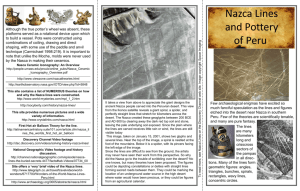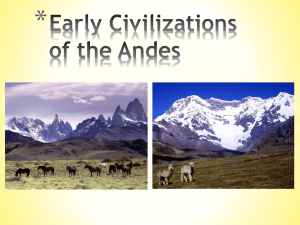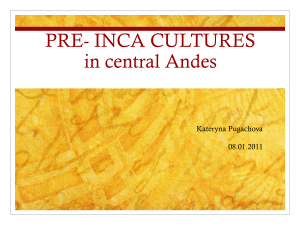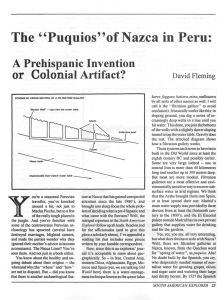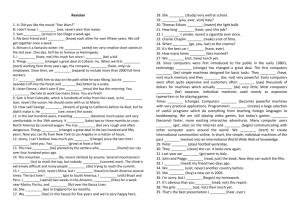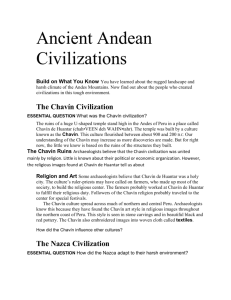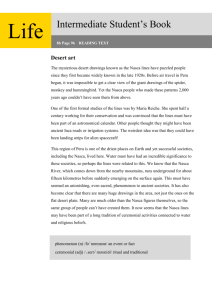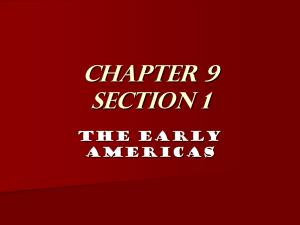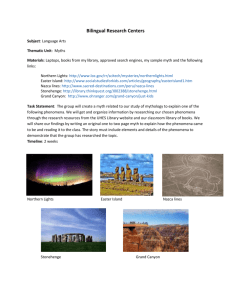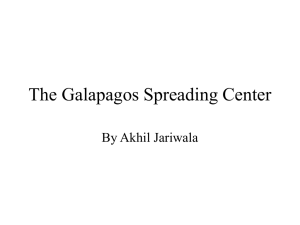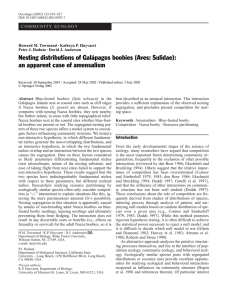The Nazca Lines (Nasca Lines), are a set of zoomorphic
advertisement
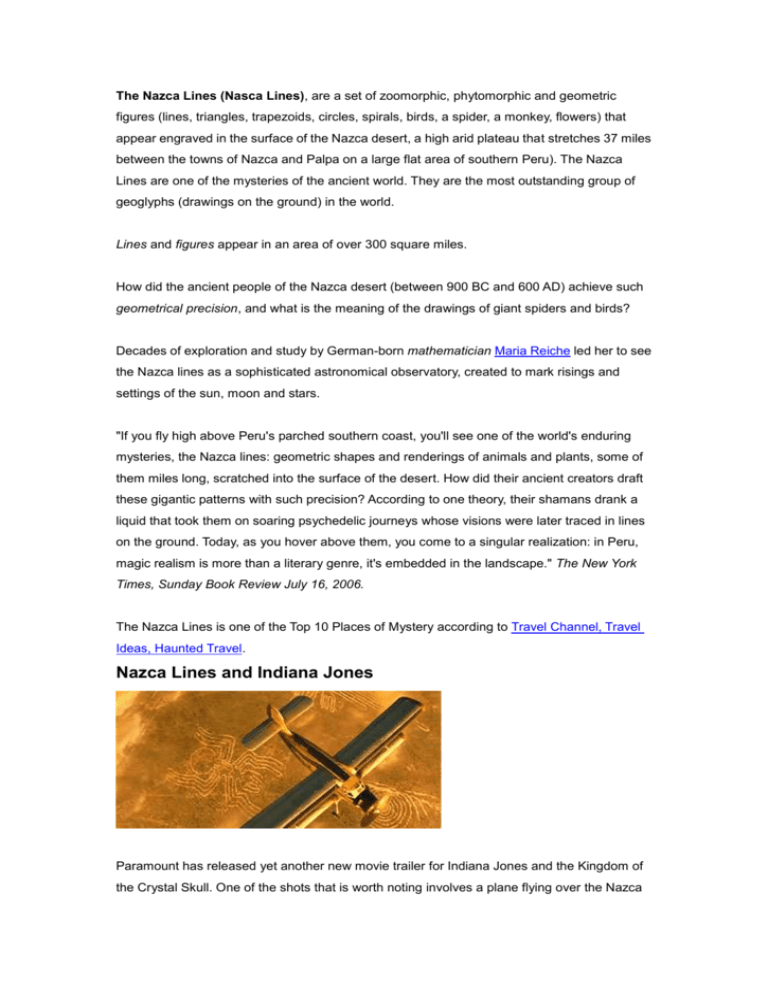
The Nazca Lines (Nasca Lines), are a set of zoomorphic, phytomorphic and geometric figures (lines, triangles, trapezoids, circles, spirals, birds, a spider, a monkey, flowers) that appear engraved in the surface of the Nazca desert, a high arid plateau that stretches 37 miles between the towns of Nazca and Palpa on a large flat area of southern Peru). The Nazca Lines are one of the mysteries of the ancient world. They are the most outstanding group of geoglyphs (drawings on the ground) in the world. Lines and figures appear in an area of over 300 square miles. How did the ancient people of the Nazca desert (between 900 BC and 600 AD) achieve such geometrical precision, and what is the meaning of the drawings of giant spiders and birds? Decades of exploration and study by German-born mathematician Maria Reiche led her to see the Nazca lines as a sophisticated astronomical observatory, created to mark risings and settings of the sun, moon and stars. "If you fly high above Peru's parched southern coast, you'll see one of the world's enduring mysteries, the Nazca lines: geometric shapes and renderings of animals and plants, some of them miles long, scratched into the surface of the desert. How did their ancient creators draft these gigantic patterns with such precision? According to one theory, their shamans drank a liquid that took them on soaring psychedelic journeys whose visions were later traced in lines on the ground. Today, as you hover above them, you come to a singular realization: in Peru, magic realism is more than a literary genre, it's embedded in the landscape." The New York Times, Sunday Book Review July 16, 2006. The Nazca Lines is one of the Top 10 Places of Mystery according to Travel Channel, Travel Ideas, Haunted Travel. Nazca Lines and Indiana Jones Paramount has released yet another new movie trailer for Indiana Jones and the Kingdom of the Crystal Skull. One of the shots that is worth noting involves a plane flying over the Nazca Lines (seen left), one of Peru's main tourist attractions. The film will take Indiana Jones across New Mexico, Connecticut, Mexico City and the jungles of Peru as he battles for the crystal skull. See also: Nazca Lines and Indiana Jones Video. Archaeologists explore Peruvian mystery Press release issued May 22, 2008. Source University of Bristol Indiana Jones may be flying over the Nazca Lines in Peru in his latest Hollywood adventure, but two British archaeologists have been investigating the enigmatic desert drawings for several years. Dr Nick Saunders from Bristol University and Professor Clive Ruggles from the University of Leicester are locating and measuring the lines with high-precision GPS, photographing the distribution of 1,500-year old pottery, and painstakingly working out the chronological sequence of overlying lines and designs. Funded by the Anglo-Peruvian Cultural Association in Lima, their research hopes to unlock the purpose of the dazzling but confusing array of desert drawings. Bizarre explanations, such as alien visitations, ancient landing strips, and astronomical calendars are being replaced by serious archaeological and anthropological ideas. Professor Ruggles and Dr Saunders agree with other experts that some lines were pathways across the desert, others had a more religious significance, while some appear associated with desert scars caused by flash-floods, and are probably linked to the veneration of water. “Identifying which lines came first, whether they were spiritual or functional, and exactly how they were used during a thousand years of prehistory is a great challenge,” said Dr Saunders. “The treasure is not gold but insight, and the mystery is cultural not extraterrestrial.” The Nazca Lines "Needle and Thread" drawing begins at the left of the figure as a wide beam; the beam is focused to a line as it moves right the "needle"; the Nazca people then use an oscillatory motion to delineate the borders of a plateau; and ends up drawing a spiral, a common motif at ancient sites. The Nazca or Nasca lines are groups of large line drawings and figures that appear, from a distance, to be etched into the earth's surface on the arid Pampa Colorada northwest of the city of Nazca in southern Peru. Since their discovery in the 1920s, the lines have been variously interpreted, but their significance remains largely shrouded in mystery. The Nazca lines were constructed more than 2,000 years ago by the people of the Nazca culture (c. 200 BC–AD 600). Nazca culture: A pre-Incan civilization that flourished on the southern coast of Peru from about 200 B.C. to about A.D. 600, known for its polychrome vessels decorated with stylized designs and for the enormous drawings of geometric and zoomorphic forms etched in the desert floor 200 miles south of Lima. Size comparison: The Empire State Building was built in 1931 and is 1,250 feet tall. By comparison the Nazca lines - "Needle and Thread" (see above) is 2,800 feet long.
